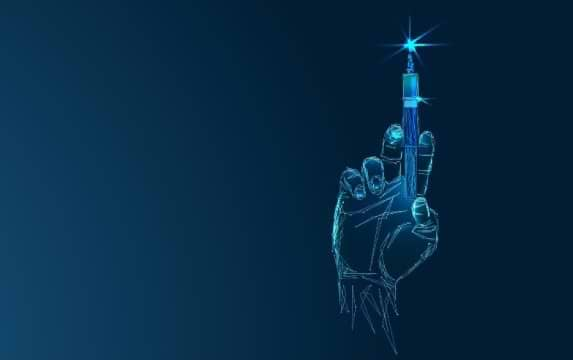For many men erectile dysfunction (ED) is an uncomfortable subject to talk about. Sometimes embarrassment or fear of an unpleasant response overcome the will and the courage to open up and share the problem with a partner or a friend, or even of seeking professional help. Nevertheless, it is important to know that ED is one of the most common forms of male sexual dysfunction, affecting 150 million men worldwide. Without appropriate treatment, it might harm sexual health as well as self-esteem and undermine intimate relationship between partners.
What causes erectile dysfunction and how exactly is it manifested? keep reading to find out more.
What is Erectile Dysfunction (ED)?
ED is defined as the continuous (chronic) inability to attain and maintain an erection sufficient for satisfactory sexual intercourse. It is a dysfunction which forms part of a broader term, previously referred to as ‘impotence’, which encompasses a variety of other sexual dysfunction concerns, including those related to sex drive, ejaculation, achieving an orgasm and others.
Although most men experience occasional problems achieving an erection, persistent or recurring erectile problems should be professionally diagnosed and treated, especially as they might indicate an underlying systemic disease. Beyond its physical manifestation erectile dysfunction might have emotional symptoms1 such as low self-esteem, performance anxiety, depression and feelings of frustration and stress, which are often experienced by both partners.
However, it is important to remember that you are not alone, and although the problem is not sufficiently debated – it is extremely common. ED could be manifested at any age among men who are sexually active but its prevalence increases with age: about 10-20% of the men under the age of 40 suffer from it, compared to 50% of the men aged 50 and over, and about 70-95% of the men aged 70 and over2. While each year in Israel, about 70 thousand men are newly diagnosed with ED3, unfortunately many of them are unaware of the basic facts related to this dysfunction, and only a small percentage seek medical care.
How Does It Happen? Let’s talk Anatomy
Erection is a consequence of a complex physiological process, involving timing and coordination between the vascular system and psychological, neurological and hormonal mechanisms, which combine together to affect penile changes, and its transformation from a flaccid into a rigid and erect state. Consequently, a problem in any phase of the aforementioned processes might trigger a dysfunction4.
A bit of anatomy: the penis is composed of two cylindrical chambers made of spongy muscle tissue, called the Corpus Cavernosum (Drawing 1). An erection occurs when sexual stimulation resulting from touch or thought, passes through like an electrical signal from the brain onto nerve sets along the spinal cord into the penis. That triggers the release of a molecule named Nitric Oxide (NO), which causes the cavernosum muscles to relax and blood vessels to expand. Consequently, the blood supply to the penis increases, the cavernosum chambers fill up with blood and the penis gets rigid and erect. At the same time, a chain of biochemical reactions activates an enzyme called PDE5, which is active in the reverse stage, in which the penis turns flaccid again. This is an important enzyme and its activity has formed the basis for the development of a family of medications for the treatment of ED, namely ‘PDE5 Inhibitors’, which includes the famous Viagra drug5. These medications enable continuous relaxation of penile muscle tissue so as to allow an enhanced, prolonged erection.
When the penis is erect, the muscle tissue in the blood vessels of the cavernosum chambers relaxes, and they fill up and trap blood. Consequently, the blood pressure in the penis increases, causing it to become rigid.
What are the causes of ED?
The causes of ED may be divided into physical or psychological/emotional (psychogenic) categories or the combination of both – according to the mechanism of their development6 Previously, it was thought that ED was caused primarily due to emotional issues such as anxiety (performance anxiety, fear of failure during the act) or depression. Nowadays we know that the majority of cases are due to physical causes, and diagnosis is crucial for getting the most effective treatment.
Physical causes:
- Vascular problems – this is the most common cause of ED in men over the age of 40. Vascular problems cause a reduction in blood supply to the penis7, as the arteries which supply it with blood become narrowed. Risk factors include older age, high blood pressure, high cholesterol, atherosclerosis, smoking and obesity. In this situation partial erection is plausible, alternatively, a complete erection may take a longer time to attain. A problem in the venous system (causing the blood to drain too fast from the penis) or one in the penile blood vessels, might also manifest in ED. In this case, though an erection is still plausible, it is often not sufficiently rigid or is lost prior to, or immediately after penetration. Men who have both arterial and venous problems are usually incapable of attaining a complete erection.
- Nerve damage (central or peripheral nervous system) – diseases such as Multiple Sclerosis, Parkinson or strokes can compromise the brain’s ability to conduct sexual arousal signals to the reproduction system. Prolapsed disc, spinal cord damage (e.g. post operations), pelvic fractures, oncological treatments (e.g. growth removal or bowel/bladder cancer radiation therapy) might damage penile innervation.
- Diabetes – one of the most common causes of ED (in 50% of the cases), due to damage to blood vessels and peripheral nerves.8
- Hormonal causes – usually as a result of age-related decrease in testosterone – the male sex hormone, which is likely to manifest in reduced sex drive (libido) as well. Likewise, high prolactin levels, thyroid hormones’ imbalance or Cushing’s disease (which causes adrenal damage), could also trigger ED.
- Anatomical changes – caused by trauma or priapism – prolonged and painful erection without sexual stimulation; Peyronie’s disease, which causes the penis to curve, as well as scar tissue development (e.g. post radiation therapy).
- Taking medications – Antihypertensives (for high blood pressure), diuretics, anti-depressants, anti-psychotics, hormonal agents (used for the treatment of benign prostatic hyperplasia), antiacids, sleep medications, relaxants and more.
- Using alcohol and drugs
- Long distance bike riding – a unique situation, where pressure on the nerves leading to the penis, continues to affect neural function following the bike-ride. On the other hand, lack of exercise might also cause ED.
Other causes include urinary problems related to benign prostate enlargement and even contracting Covid-19 – as emerges from a recent research study9.
In most cases physical causes (apart from injury or after surgery) tend to evolve over time into ED. Thus, a man may have intermittent or partial ED which might gradually become worse, but save for cases of hormonal problems, his sex drive will not be affected.
Psychological causes:
Psychological/emotional problems are responsible for 1 in 10 of the cases of chronic ED10. As a general rule, a psychological/emotional cause for the ED is more likely than a physical cause – especially if nightly and early morning spontaneous erection is experienced
- Performance anxiety – men occasionally experience difficulties in getting or maintaining an erection. When such an episode occurs, they may face anxiety over the possibility of subsequent reoccurrence. This concern might in itself constitute a hindrance to achieving an erection, leading to even more anxiety and thus – a vicious cycle.
- Different psychological states may cause ED, including stress, anxiety, relationships or intimacy problems, depression, psychosis, and more.
Keep Positive – There is Hope!
We’ll start from the bottom line – most causes of ED are reversible or treatable with medications, medical devices, therapy or a combination thereof. In cases where there is mild damage to blood vessels, it is possible to first address the various risk factors, through incorporating the necessary life style changes. You’d be surprised to find out how exercise, quitting smoking and alcohol and sticking to the right diet in cases of diabetes and obesity, could work miracles – in terms of both prevention and treating existing problems. Consult your doctor for diagnosis and information about the best options to treat ED.
[1] https://patient.info/doctor/erectile-dysfunction
[2] Ozgoli, Giti et al. “Transition stages in adjustment of wives with their husbands’ erectile dysfunction.” Iranian Red Crescent medical journal vol. 16,3 (2014): e16594. doi:10.5812/ircmj.16594https://www.ncbi.nlm.nih.gov/pmc/articles/PMC4005452/
[4] Yafi FA, Jenkins L, Albersen M, et al. Erectile dysfunction. Nat Rev Dis Primers. 2016;2:16003. Published 2016 Feb 4. doi:10.1038/nrdp.2016.3 https://www.ncbi.nlm.nih.gov/pmc/articles/PMC5027992/
[5] https://www.urologyhealth.org/images/Conditions/Penis-Crosssection.jpg
[6] https://emedicine.medscape.com/article/444220-overview#a5
[7] Gandaglia G, Briganti A, Jackson G et al. A systematic review of the association between erectile dysfunction and cardiovascular disease. Eur Urol. 2014 (65):968-978.
[8] Erectile dysfunction. NIH: National Institute of Diabetes and Digestive and Kidney Diseases. http://www.nlm.nih.gov/medlineplus/erectiledysfunction.html. Accessed June 2017.
[9] https://onlinelibrary.wiley.com/doi/10.1111/andr.13003
[10] Khera M, Goldstein I. 2011. Erectile dysfunction. BMJ Clinical Evidence. https://bestpractice.bmj.com/info/evidence-information/
The Company hereby clarifies that the information contained on the website is for informational purposes only, and is not intended to be a substitute for professional medical and healthcare advice, and does not constitute medical advice or opinion. Always seek the advice of your physician or other qualified health provider with any medical condition or question you may have regarding a medical condition.





